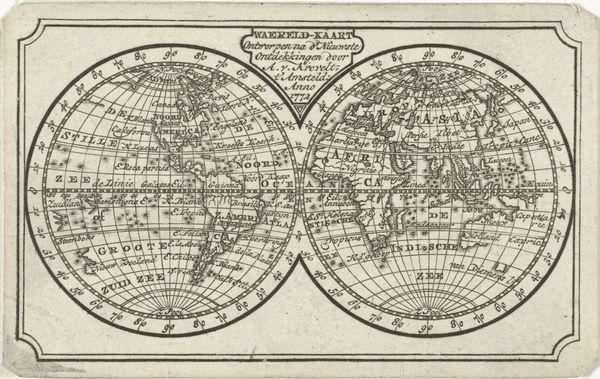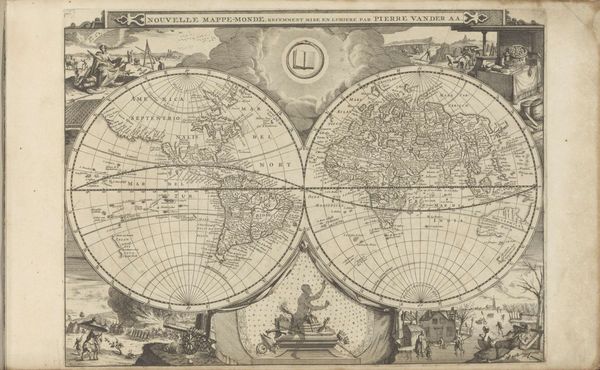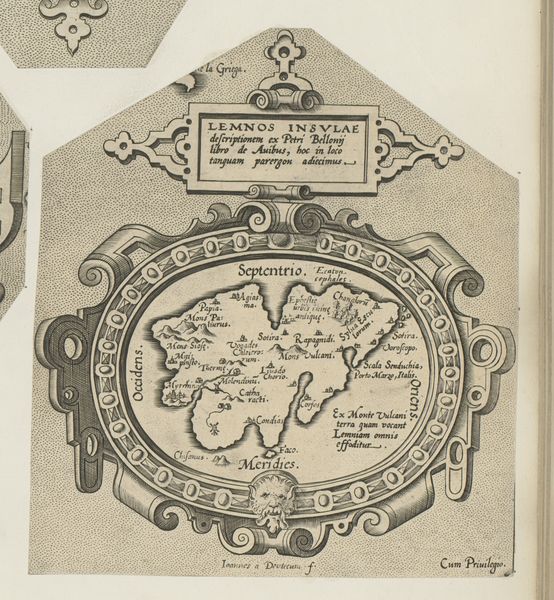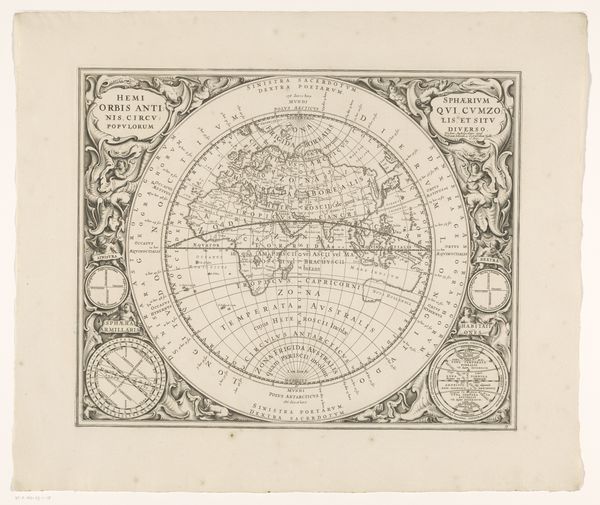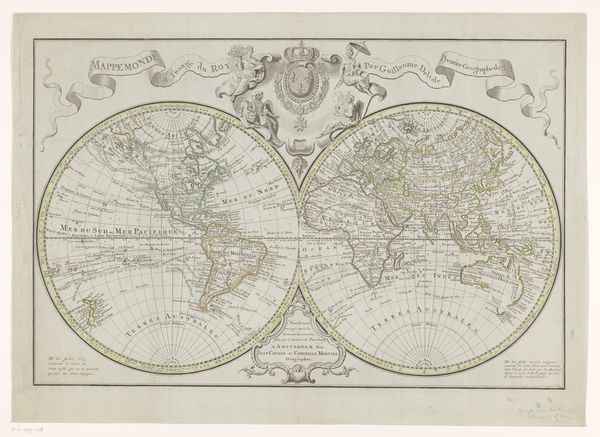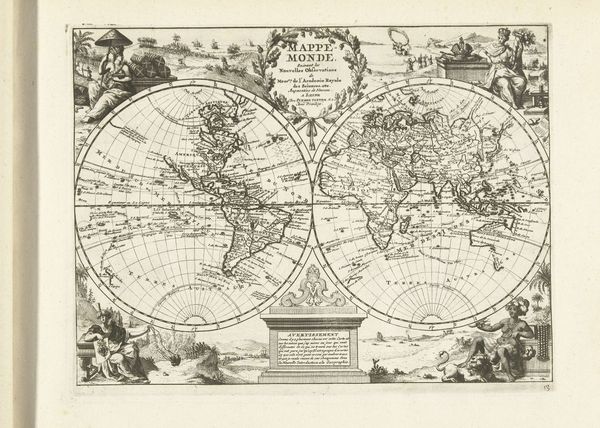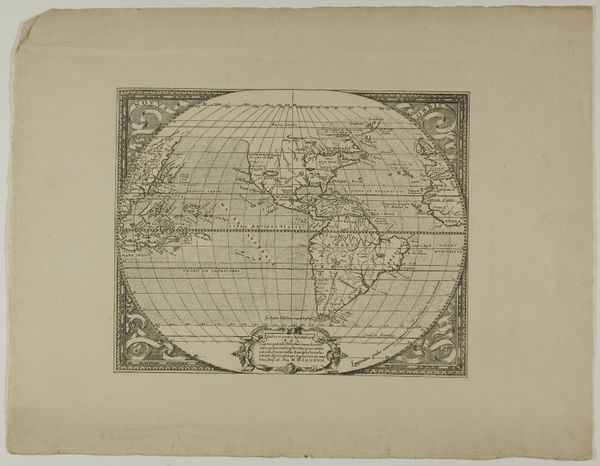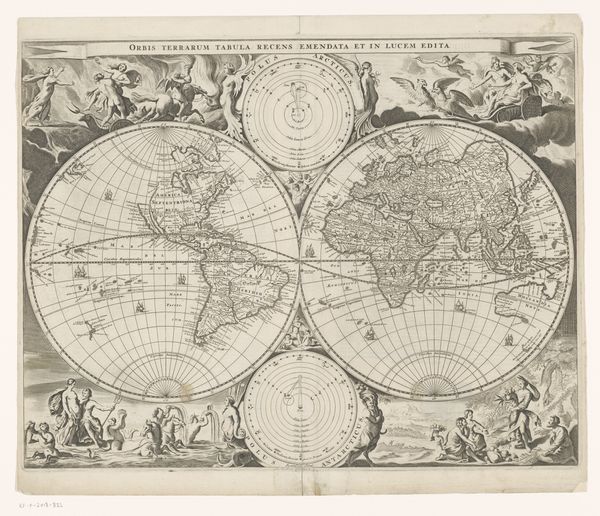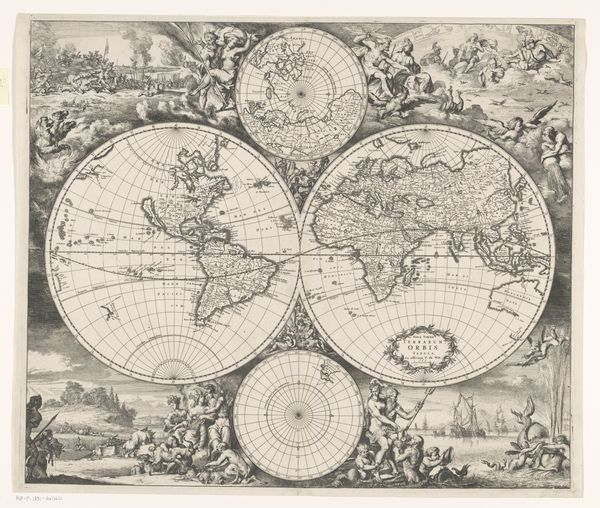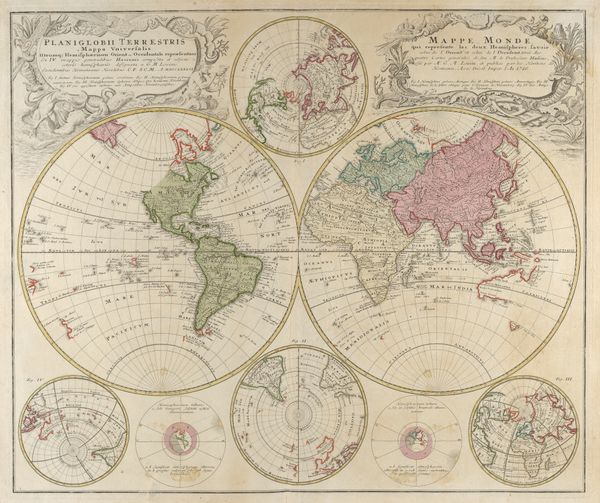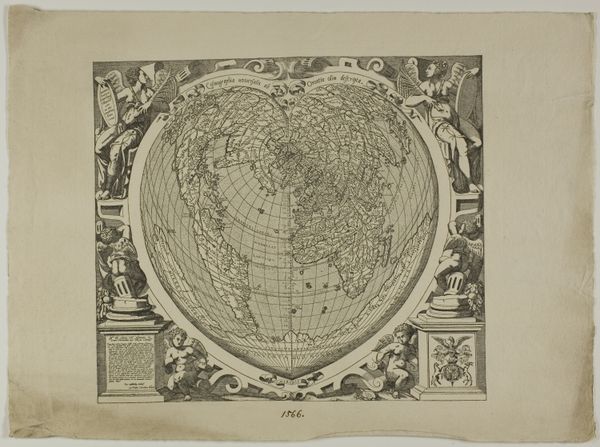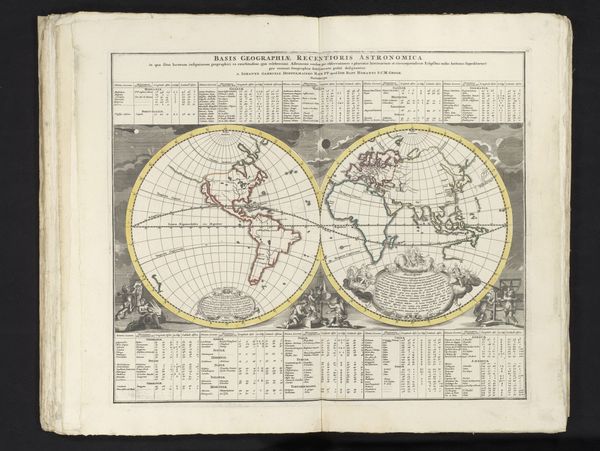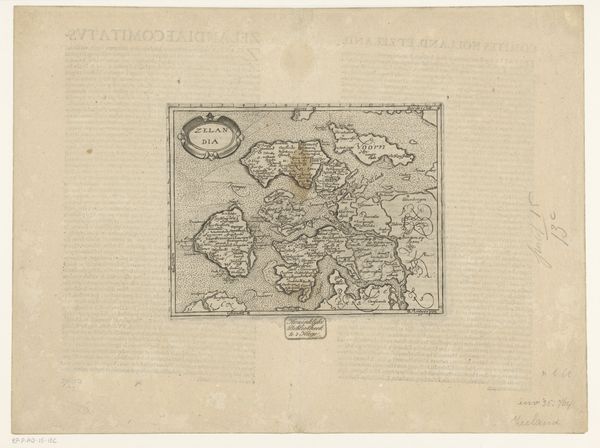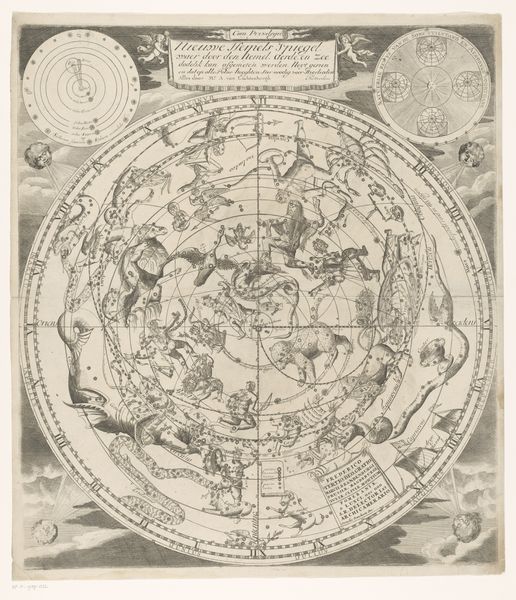
print, engraving
# print
#
11_renaissance
#
geometric
#
history-painting
#
engraving
Dimensions: height 112 mm, width 159 mm
Copyright: Rijks Museum: Open Domain
Curator: Welcome. Let's observe this print dating from around 1600, entitled "Cartouche met de wereldkaart"—Cartouche with the world map. Created anonymously, it's an engraving showing the known world at the time. The ornamentation surrounding the map is just exquisite. Editor: My first impression is of an intricate, meticulously crafted declaration. The composition is complex, almost overwhelming with detail, suggesting a world densely packed with knowledge and potential. Curator: Precisely. Printmaking during this era became crucial for disseminating information. The cartouche isn't just decoration; it frames the map, guiding the viewer’s interpretation and, more broadly, suggesting a European framing of the world. What power that holds. Editor: It speaks volumes about the burgeoning age of exploration and colonization, a visual claim over the world. Look at how continents are shaped—Europe, of course, centered, but also idealized in proportion to, say, “Africa” and “America, Sive,” where 'sive' means 'or'.. There's also the symbolic weight of those swirling decorative elements—reminders of the artist’s skill. Curator: Absolutely, we must remember that early maps served multiple purposes, not least establishing territorial claims. Engraving itself allows for precision and distribution, vital in projecting state power and advancing commerce, what kind of choices are being made that frame it, in detail. Editor: Thinking of how prints were consumed, I'm reminded that viewing such a map wouldn't have been a passive experience. How did this map encourage, or even enable, Europeans to see themselves in relation to the rest of the world? The implications are staggering. The placement of continents or names gives it certain meaning. Curator: And that very notion, the relationship to "the rest of the world," presupposes a hierarchy. These prints played a huge role in shaping—or rather misshaping—understanding and driving that global exploitation. It wasn’t value-neutral in any way. Editor: Indeed, there are many stories embedded within this world map that are both revelatory and painful. Maps serve to remind us of the stories being told—and not told—in colonial narratives, still vital today. Curator: Seeing it displayed here underscores how profoundly cartography has influenced, and continues to influence, our global reality. Editor: Yes. We are left thinking about whose world this really represents.
Comments
No comments
Be the first to comment and join the conversation on the ultimate creative platform.
